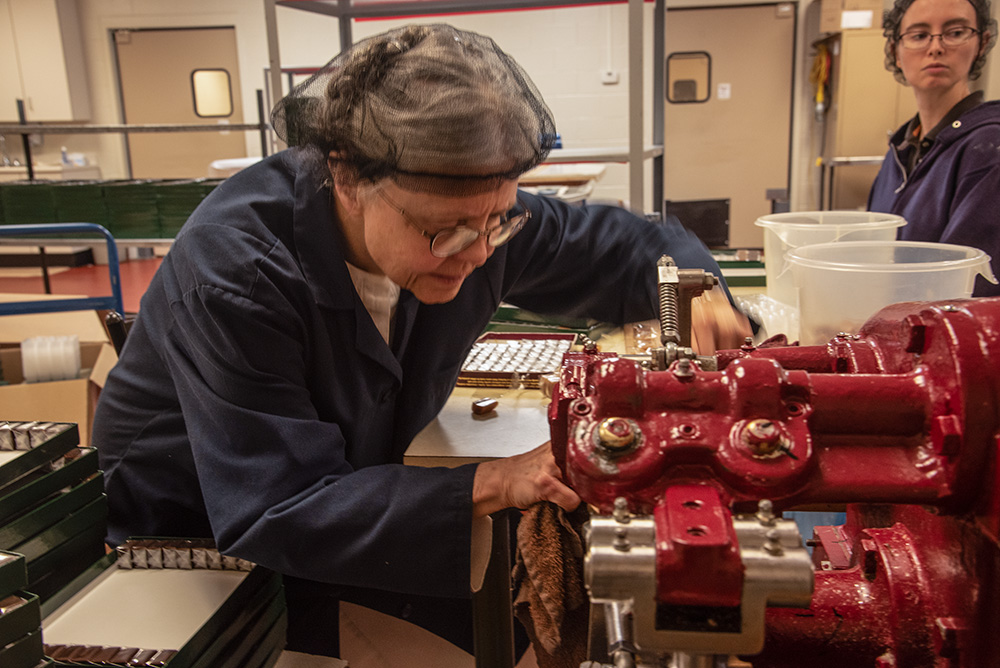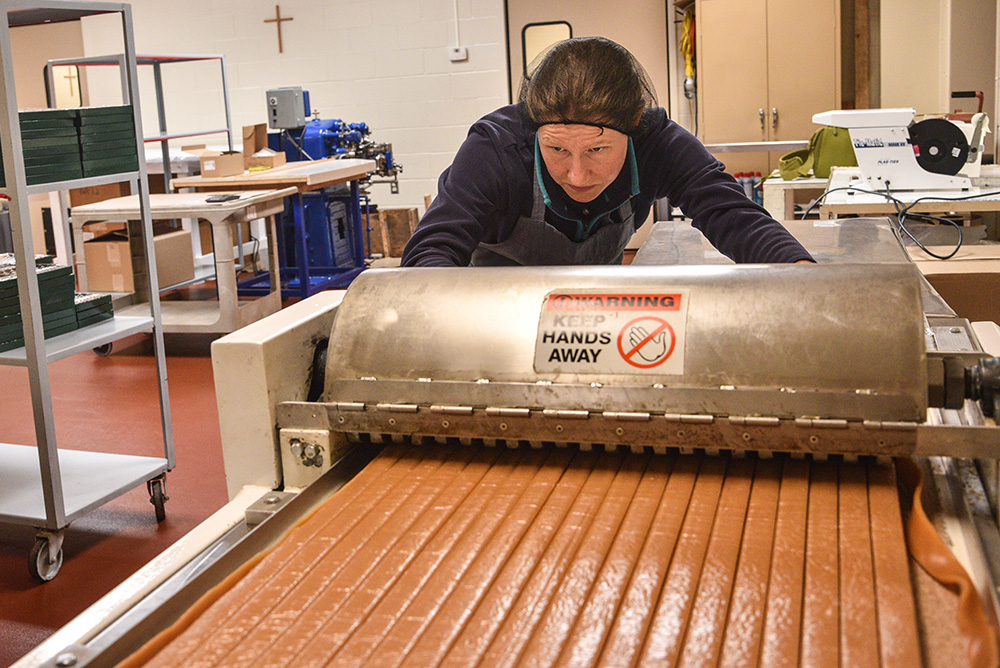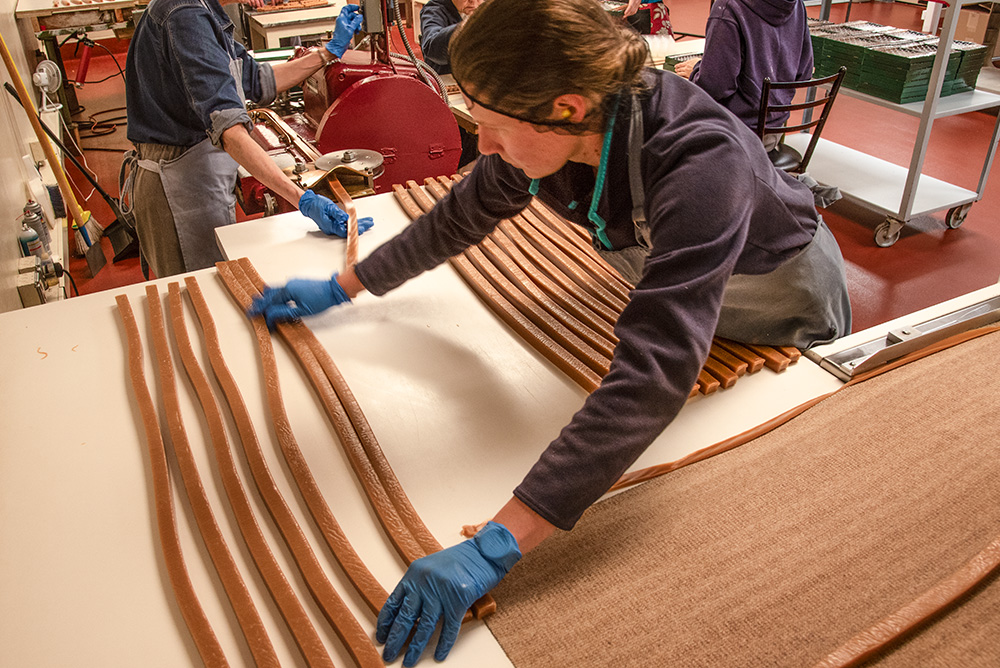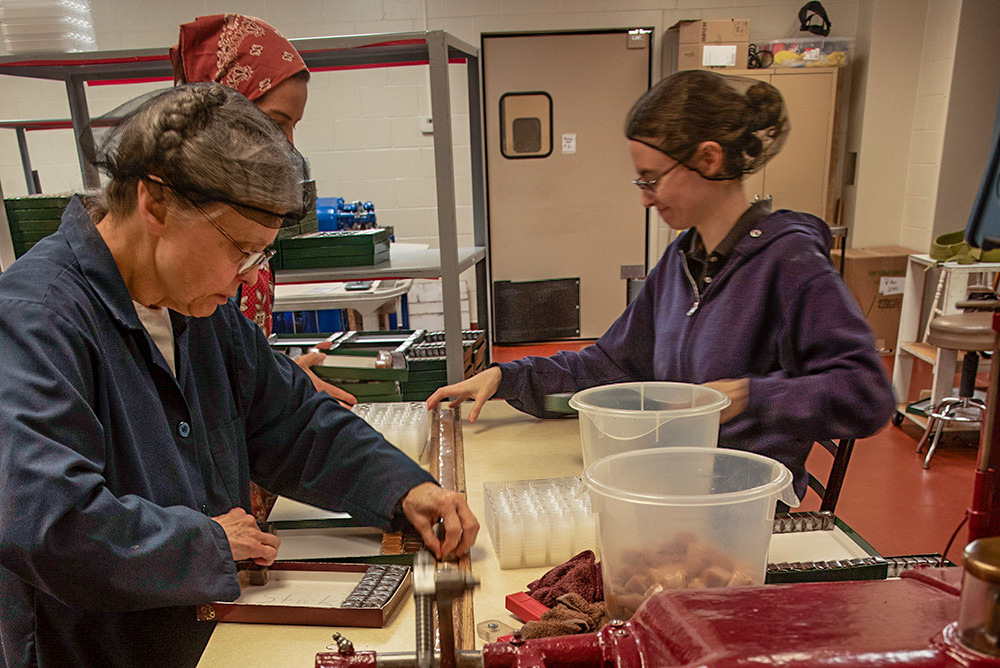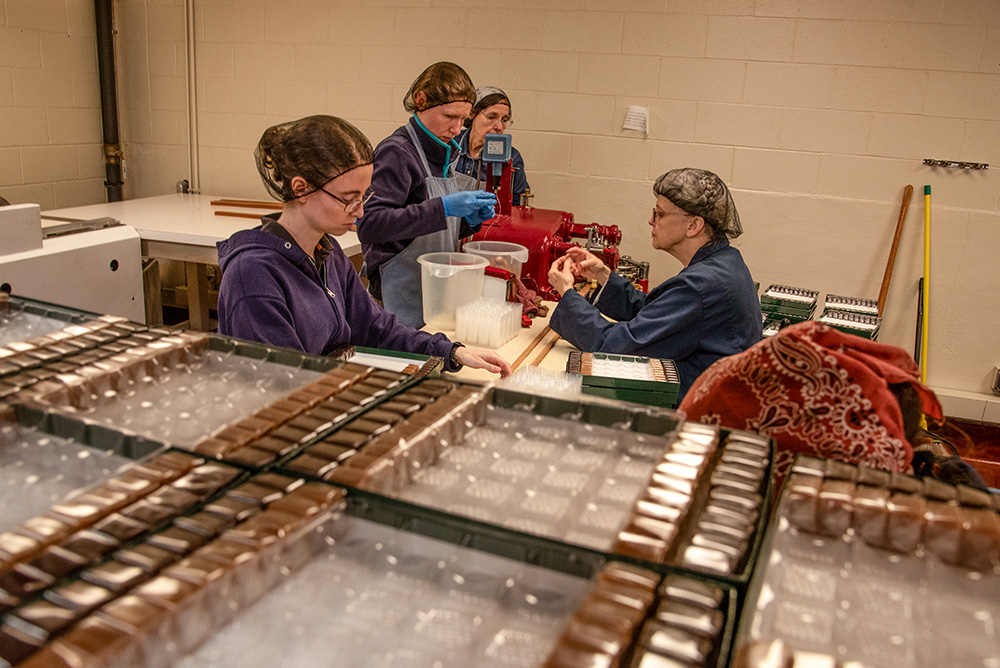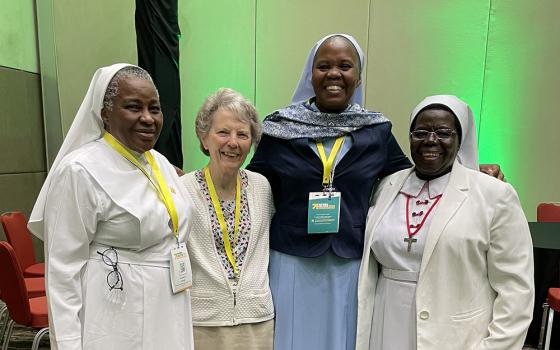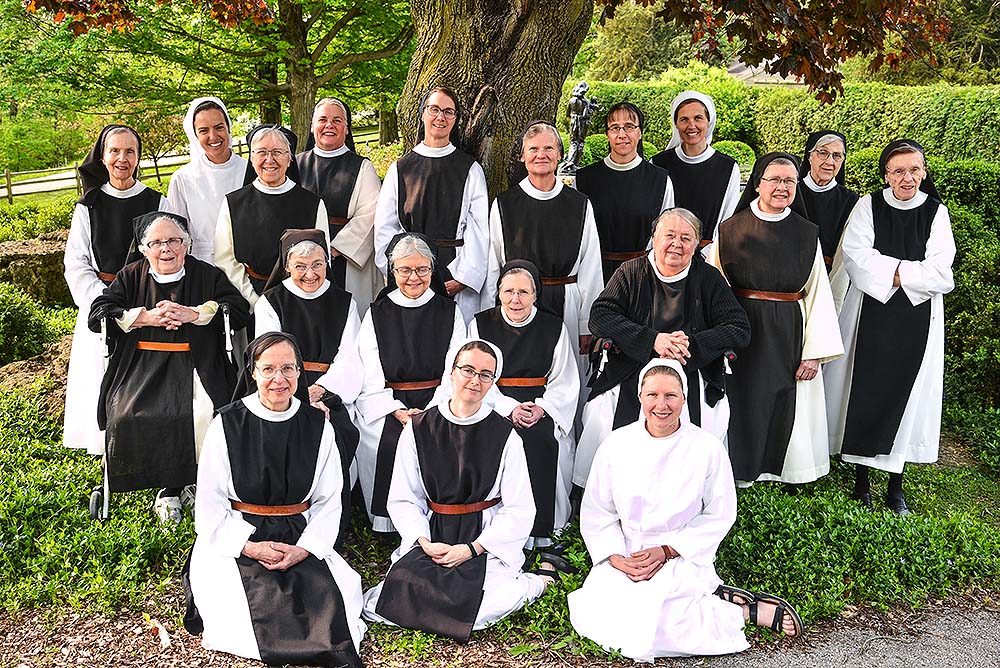
The Trappistine nuns at Our Lady of the Mississippi Abbey near Dubuque, Iowa (Courtesy of Bill Witt)
Ask fellow Iowans what they know of the Trappistine nuns at Our Lady of the Mississippi Abbey hidden in the hills and rolling farmland near Dubuque, Iowa, and what leaps to mind is their company, Monastery Candy.
Because of the superior quality of the confections these nuns have made since 1965, Monastery Candy is a traditional gift nationwide, especially at Christmas. There's also a big surge in their sales for St. Patrick's Day with Irish Mints in a gleaming green box emblazoned with their logo, a silhouette of their monastery.
In one sense, Our Lady of the Mississippi Abbey is a little bit Irish, too, as this abbey traces the lineage of its motherhouse, as well as candy-making knowledge, to Mount St. Mary's Abbey in Wrentham, Massachusetts, which in turn is a daughter house of St. Mary's Abbey in Glencairn, Ireland.
The flourishing of both its lucrative candy business and vocations to Mississippi Abbey led to a critical moment in the life of this monastery in 1997, which had consequences across the Atlantic Ocean. The nuns entered into a period of discernment of a path forward for their community. Was God calling them to further develop their own monastery's grounds and structures, to make a foundation of a new monastery known as a daughter house, or possibly both?
Sr. Kathleen O'Neill shared with GSR about the first movements of the Spirit prompting Mississippi to consider Norway, through a Norwegian Trappistine living in France.
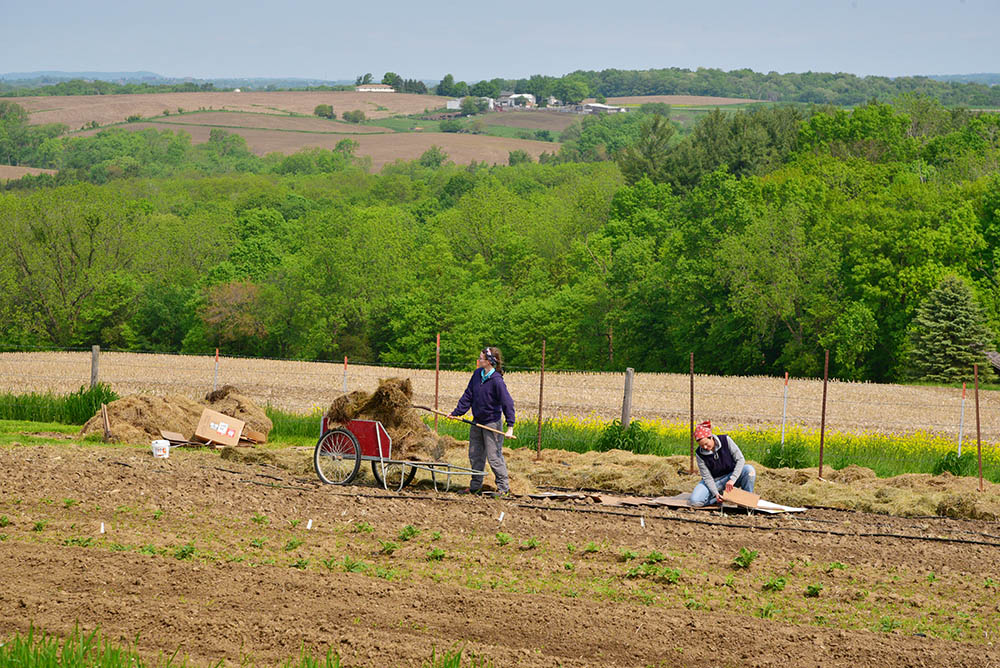
Trappistine nuns at Our Lady of the Mississippi Abbey near Dubuque, Iowa, tend to their land. (Courtesy of Bill Witt)
"Sr. Ina Andressen felt this call to go back to Norway and see if by any chance it was ready for monastic life," O'Neill said. "She went back, and she did find that the country was much more open to a Catholic presence than it had been when she was there earlier. She wanted to have some other sisters with her, so she came to the States and went around to some of our monasteries, and we were one of the places she visited."
The community was asked to pray about where they felt God was calling both their community and each sister as an individual among the choices of Tunisia, Norway or Iowa. Jan. 26, 1997, the feast day of the founders of their order, was dedicated as a special day of prayer to reach a decision.
The vote for Norway was unanimous. These women would make a new foundation among the ruins of a Cistercian abbey in Tautra, bringing monastic life back to Norway.
For O'Neill, the witness of these two Trappist monasteries in Norway — Tautra and its counterpart Munkeby Monastery for men — is an important part of meeting the challenges the church faces today: "The church has to learn how to survive in the industrial world, and the church needs to speak to the post-industrial world. In that sense, it is wonderful to be bringing this kind of life back to a place where it existed in the past."
A direct challenge for any religious order as well as the church as a whole is vocations, and this will be one of the trials faced by the Norwegian Trappist communities: a very small community of Catholics in Norway from which vocations could flourish.
Advertisement
"They will have to rely on international vocations. That is a struggle for them, and will be a poverty," said Sr. Myra Hill, vocations director of Mississippi Abbey.
It's a crisis other Trappist monasteries have faced, Hill explains. She points to the experience of a Trappist community in Utah.
"Our brothers went to Mormon country in the '40s from Gethsemani, and made a foundation in Utah," Hill said. "There's no Catholics around there, and they never came. The house closed a few years ago because it couldn't make it there."
The structure of the Trappist order developed as a successful reform of one monastery of monks at Citeaux (from which we get the name "Cistercian"), sparking the question of how to keep the spirit of the reform they were part of alive. How could autonomy of each monastery be preserved, yet bind the monasteries in charity with a legal aspect detailing elements of limited authority over foundations of new monasteries?
The bond uniting the monasteries was defined in the Charter of Charity of 1119. It outlines the relationships maintained through a system of visitations and mutual support, described as "unity in pluralism" that has kept that spirit of reform alive even today among Trappist monasteries.
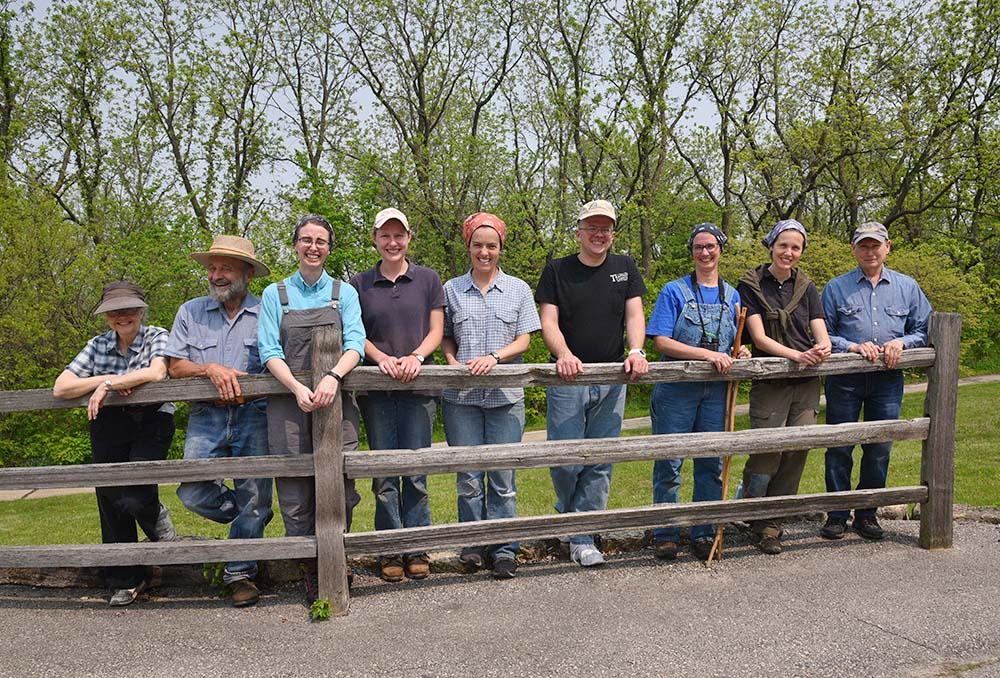
The nuns of Our Lady of the Mississippi Abbey and the monks of New Melleray Abbey enjoy time together in rural Iowa. (Courtesy of Bill Witt)
Women were attracted to this order's life early in its history but, as women in the church, could not hold the same power of governance monasteries of men enjoyed. The solution was to connect Trappist monasteries of men to women as witnessed between Munkeby and Tautra. It is also part of the life in Mississippi, as their brother monks live a 20-minute drive away at New Melleray Abbey in Peosta, Iowa.
When Mississippi's motherhouse of Wrentham was looking for a place to make a foundation in 1964, the abbot of New Melleray in Dubuque invited the women to Iowa and the two communities have been a source of mutual support through participating in the sacramental life of the church together since.
The relationship between Tautra and Munkeby, and Mississippi and New Melleray, reflect a unique space men and women of the Trappist order share with each other, which O’Neill describes as a "beautiful spot for us in the church, that is a way of men and women really working in collaboration."
"I don't think people are really considering that when looking at a vocation to the Trappist life as a monk or nun," but as O’Neill notes, "When you're living the life, it does say something to you, that we really are one order of monks and nuns living the same life."
And what is the essence of that life that the men and women of the Trappist order share? As Hill explains to young women interested in their charism, according to the Trappist constitution they are "wholly ordered to contemplation."
Through facing the question of how to make that concrete in everyday life, "our life is structured in such a way we are to pray always, but also to interiorize that so as to become prayer, so that it isn't just that I'm thinking prayers," Hill said. "Even if I don't formulate that thought in my head, I'm still present to Christ ... and that is what I hope to be before I die."
The nuns of Mississippi Abbey, though secluded in the tranquility of a quiet Midwestern state, share news of Trappist monasteries throughout the world and the struggles they are engaged in.
O’Neill's voice breaks in echoing the words of their abbot general recently who, in speaking to those monasteries threatened by violence raging around them and offering sanctuary on their land to upward of 15,000 displaced persons as in the case the monks of Mokoto in Congo, or forced to flee as their sisters in Nicaragua earlier this year: "You are not forgotten, we are not going to leave you isolated."
"We are isolated from the world, but at the same time what happens is the world expands in the way of Christ," Hill added. "We're connected to the world and everything that is going on, but through a different spider web, rather than the normal cultural filters."
